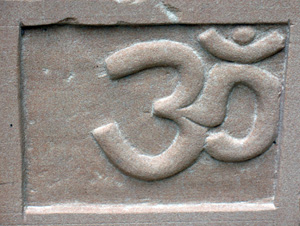MANHATTAN–Dressed in a white cotton thermal shirt and white dhoti - reminiscent of the traditional garb donned by another Mahatma, Mohandas K. Gandhi - Swami Bua leads a small group of followers through a 45-minute course of Hatha yoga. The class is held nightly at the Swami’s apartment on West 58th Street in midtown Manhattan.
After the yogins have stretched through a series of standing, sitting and reclining poses, the Swami moves into meditation. “We will have yoga relaxation,” he says with a thick Indian accent. “The world is in trouble. We need peace. We need happiness. We need auspiciousness.”
Lying down on their backs in savasana, or corpse pose, the devotees relax their muscles and their minds at the Swami’s urging - legs gently spread apart, ankles falling out to the sides, palms facing the ceiling. The Swami prays over the room, breathing low and deep, but speaking forcefully. He instructs the yogins to place their left hands on their chests, over their cosmic hearts, and their right hand on their navels, the energy center of the body and symbolic seed of creation. Placing a hand on each center connects the two, and unites Atman and Brahman, the human soul and the universal soul in Hinduism.
Then, Swami Bua leads the room in a mantra.
“Aaaaaaauuuuummmmm,” he intones slowly, letting the reverberation drag out over the course of one long exhale. The yogins join him — no vibrato, just one crisp tone.
After the breath, their stomachs and chests draw in more air, steadily rising and filling.
“Aaaaaauuuuuummmmm,” the group chants in unison, lingering on the sacred hum for almost half a minute.
Then again the room is dark and silent until the sound of breath being drawn through the nostrils pervades the air.
“Aaaaaaauuuuuummmm,” the group chants a third time. Their left hands vibrate on their chests, and their right hands slowly sink to the floor, riding their bellies as they expel the air.
The devotees remain lifeless on the floor, slowly drawing and releasing breaths in a steady rhythm. The Swami blesses the room once more and chants, “Om, Shanti, Shanti, Shanti, Salaam, Salaam, Salaam, Peace, Peace, Peace, Om.”
For the Swami and yogins, the yoga ritual is more than a relaxation technique. Chanting the sacred syllable Om three times represents the unity of many triads that appear in Hindu tradition: the three sounds of Om itself, A-U-M; beginning, middle and end; past, present, and future. Chanting shanti, or peace, three times, removes the three types of obstacles that block the path to enlightenment: those from the divine world of the gods, those from the physical world and those within our bodies and minds. The Swami chants three translations of shanti/salaam/peace in honor of the cosmic “trimurti,” or trinity of gods — Brahma, Vishnu and Shiva, or the creator, preserver and destroyer, respectively.
Yogins practice pranayama, or breathing techniques, to gain mental, physical and spiritual strength.
“You gain your energy, your breath from the cosmos,” Swami Bua explains. “You feel the vibration in your body and soul.”
“Prana,” which is the Sanskrit root, means life force; “ayama” means to prolong or regulate. The very vibration that arises when chanting Om represents the original sound, the original vibration of creation. This nightly ritual is not a class, but a physical and mental reminder that man and God are one.
“I do not teach yoga,” Swami Bua says. “I lead the way to heaven.”
This Glimpse of Faith was filed by News21 Fellow Karla Bruning



 Print
Print Bookmark
Bookmark
